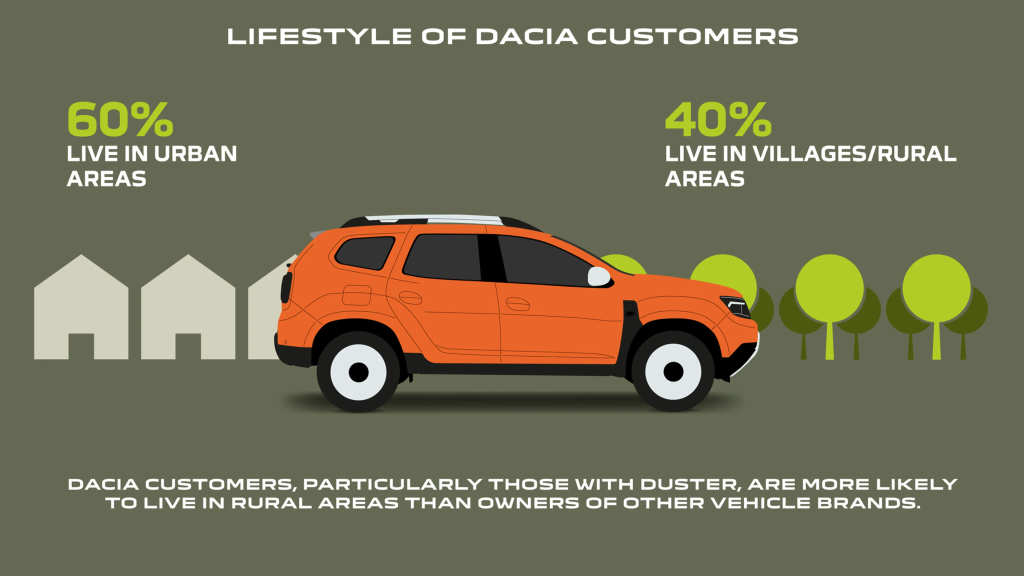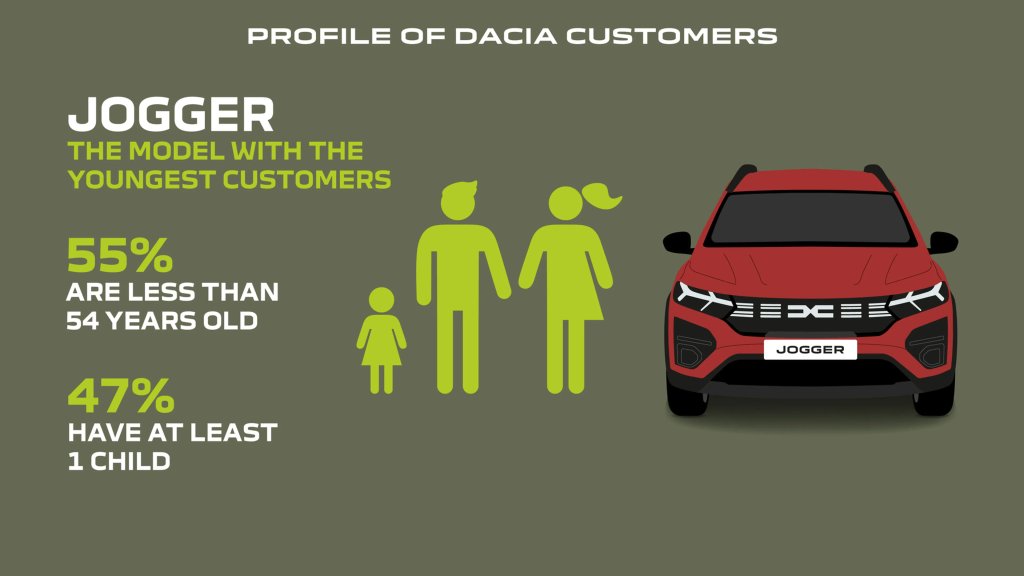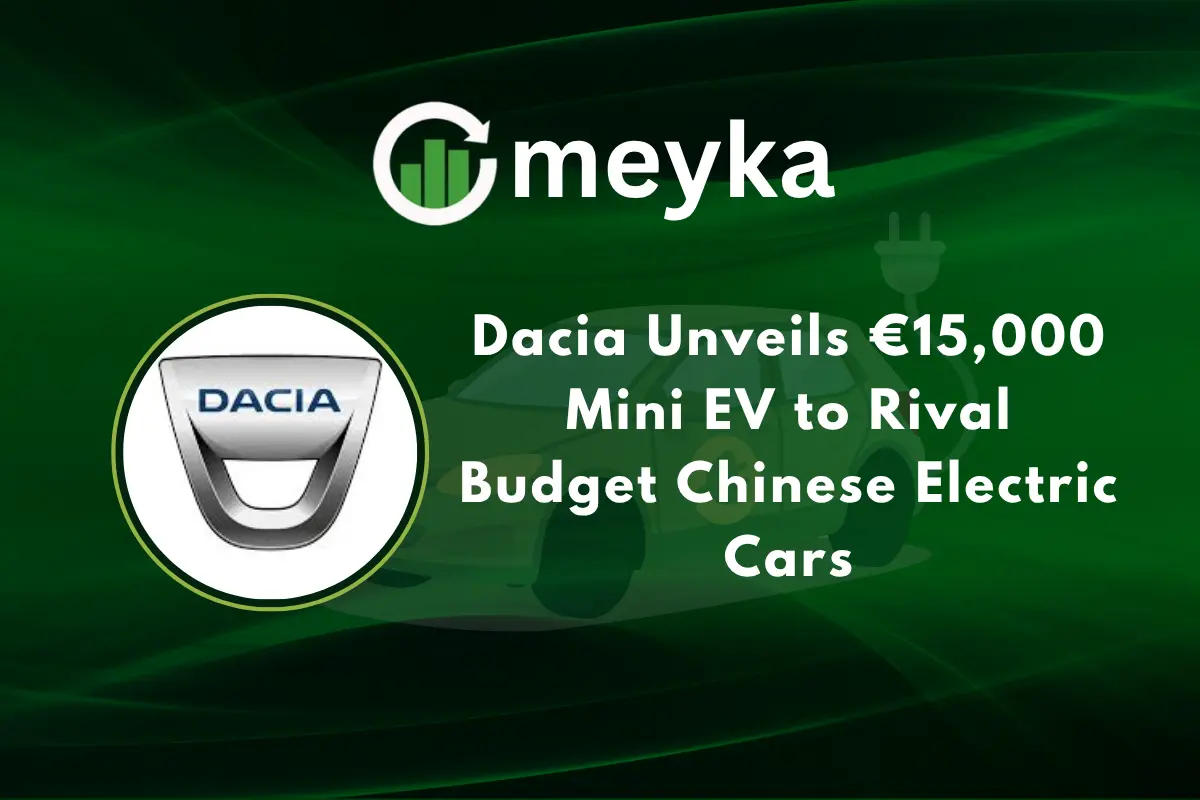Dacia Unveils €15,000 Mini EV to Rival Budget Chinese Electric Cars
On October 6, 2025, Renault’s budget-friendly brand, Dacia, unveiled a bold new electric vehicle (EV) prototype called the “Hipster Concept.” Priced under €15,000 (approximately $17,625), this compact, minimalist EV is designed to challenge the influx of affordable Chinese electric cars flooding the European market.
At just 3 meters long and weighing under 800 kg, the Hipster is tailored for city driving, offering a practical range of 100-150 km per charge, ideal for daily urban commutes. Its design draws inspiration from classic European city cars like the Mini and Fiat 500, featuring retro aesthetics and a straightforward, no-frills interior.
To keep costs low, the Hipster incorporates basic elements such as canvas seats, manual windows, and strap door handles, focusing on simplicity and efficiency. This move underscores Dacia’s commitment to providing affordable electric mobility options in an increasingly competitive market.
Background on Dacia and the EV Market
Dacia, a subsidiary of Renault, has long been recognized for producing affordable, practical vehicles. Since its inception in 2004, the brand has focused on delivering value without compromising on essential features. With the unveiling of the Hipster Concept, Dacia aims to revolutionize the electric vehicle (EV) market by offering a budget-friendly option that doesn’t skimp on quality or design.

The European EV market has seen significant growth, driven by increasing environmental awareness and government incentives. However, many affordable EVs still carry a hefty price tag, making them inaccessible to a large segment of the population. Dacia’s Hipster Concept seeks to bridge this gap by providing a compact, efficient, and affordable electric car tailored for urban living.
The New Mini EV: Key Features
The Dacia Hipster Concept is a compact electric vehicle measuring just 3 meters in length and weighing under 800 kg. Despite its small size, it comfortably seats four adults and offers a boot capacity that can expand from 70 liters to 500 liters when the rear seats are folded down. This versatility makes it ideal for city dwellers who require both passenger space and cargo capacity.
Under the hood, the Hipster is powered by a modest battery and motor, delivering a real-world range of approximately 100 miles (160 kilometers). This range is sufficient for daily commuting and short trips, aligning with the needs of urban drivers. The vehicle’s top speed is around 90 km/h, making it suitable for city driving conditions.
To keep costs low, Dacia has simplified the Hipster’s design. The car features minimalistic elements such as canvas seats, manual windows, and strap door handles. Additionally, the vehicle does not include traditional infotainment systems; instead, it utilizes a smartphone docking system to provide essential connectivity and controls.
Comparison with Budget Chinese EVs
The Hipster Concept joins a market full of budget Chinese EVs. Popular models include the Wuling Hong Guang Mini EV and Leapmotor T03. These vehicles have gained popularity in Europe due to their low prices and compact sizes. However, the Hipster differentiates itself by offering a European design and engineering pedigree, which may appeal to consumers seeking a blend of affordability and European quality.
Chinese EVs are often very affordable. Dacia’s Hipster focuses on a better driving experience with smart design and useful features. The vehicle’s lightweight construction and efficient use of space make it a compelling option for urban drivers looking for an affordable yet stylish EV.
Market Strategy and Target Audience
Dacia designed the Hipster Concept to attract many buyers, including young professionals, retirees, and families looking for an affordable EV. The vehicle’s compact size makes it ideal for navigating congested city streets and parking in tight spaces.

The Hipster’s minimalist design and practical features cater to individuals who prioritize functionality and value over luxury. By focusing on essential elements and eliminating unnecessary frills, Dacia aims to offer a cost-effective solution without compromising on quality.
Dacia plans to launch the Hipster in Europe first. Expansion to other regions will depend on demand and regulatory approval. The company is working with local governments and groups. They aim to encourage affordable EV use and support environmental sustainability.
Environmental and Regulatory Considerations
The Hipster Concept aligns with European Union goals to reduce carbon emissions and promote sustainable transportation. By offering an affordable electric vehicle, Dacia contributes to the accessibility of clean energy solutions for a broader population.
However, the vehicle’s production and sale are contingent on the EU establishing a new category for small cars, similar to Japan’s Kei Car class. This classification would allow for reductions in required safety and equipment features, enabling manufacturers to produce lighter and more affordable vehicles. Dacia is actively engaging with EU regulators to advocate for this classification and facilitate the Hipster’s market entry.
Challenges and Risks
Despite its promising features, the Hipster Concept faces several challenges. The European EV market is highly competitive, with established players like Volkswagen and Renault offering a range of electric vehicles. Additionally, the influx of low-cost Chinese EVs presents a significant challenge to Dacia’s market penetration.
Another hurdle is the regulatory approval required for the Hipster’s production and sale. The establishment of a new small car category by the EU is crucial for the vehicle’s viability. Delays or rejections in this process could impede Dacia’s plans to bring the Hipster to market.
Future Outlook and Conclusion
If regulators approve, the Dacia Hipster Concept can redefine affordable electric mobility in Europe. Its compact size, practical features, and budget-friendly price point make it an attractive option for urban drivers seeking an entry into the EV market.
Dacia focuses on simplicity and efficiency with the Hipster Concept. This shows a wider trend in the car industry. More companies are moving toward sustainable and affordable transportation. By focusing on essential features and eliminating unnecessary complexities, Dacia aims to make electric vehicles more accessible to a wider audience.
In conclusion, the Dacia Hipster Concept represents a bold step towards affordable and sustainable urban mobility. Its success will depend on regulatory developments and market acceptance, but it undoubtedly sets a new benchmark for budget-friendly electric vehicles in Europe.
Disclaimer: The above information is based on current market data, which is subject to change, and does not constitute financial advice. Always do your research.






